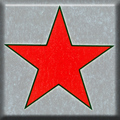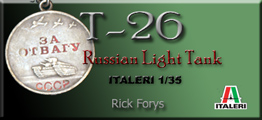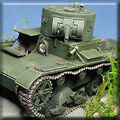|
Besides the thin armor, the big complaint from the crews was that the turret seat was fixed in the
hull, and did not turn with the turret. Although the turret was improved, the seating never
was. Production of the T-26 series stopped entirely in 1941 when most of the factories were
overrun by the Germans. When production was resumed at newly built facilities far from the front
lines, it commenced with the construction of more modern tank designs. However by this time,
well over 12,000 T-26s of all versions had been built, and were deployed in battles ranging from the
Manchurian border to the Winter War in Finland, and even the Spanish Civil War, where its 45mm gun
surprised the crews of the German Panzer Is that were also being tested there. Although it was
basically an unremarkable little tank that was quickly obsolete, it was a very important vehicle
because it helped the Soviets strengthen their mass production facilities and methods, and gave their
designers the experience to create better subsequent tank designs.
|
|






![[The T-26 origanates from the British 6-ton Vickers Type E light tank.]](T-26-92aa.jpg)
![[This is a 1933 model.]](T-26-95aa.jpg)
![[Well over 12,000 T-26s of all versions were built.]](T-26-93aa.jpg)
![[This Italeri boxed kit is actually a Zvesda kit.]](T-26-21ab.jpg)
![[I also used a New Connection aluminum barrel and a hypo-needle for the co-axle MG]](T-26-tur2ab.jpg)
![[The suspension and bogie trucks are beautiful]](T-26-Bogie1-a.jpg)
![[Hidden detail]](T-26-Bogie2-a.jpg)
![[What the kit does not include is any kind of interior.]](T-26-01aa.jpg)
![[I decided to scratch my own interior.]](T-26-03aa.jpg)
![[Tread plate]](T-26-04aa.jpg)
![[Seat frame]](T-26-seat1aa.jpg)
![[Finished]](T-26-05aa.jpg)
![[Painted and weathered]](T-26-42aa.jpg)
![[Ready to seal up!]](T-26-40aa.jpg)
![[Color and Gloss-cote]](T-26-50aa.jpg)